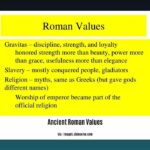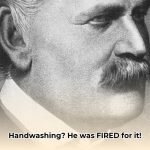Have you ever wondered what defined your place in ancient Roman society? It wasn’t just about wealth; it was a complex interplay of family lineage, occupation, honor, and sheer luck. This is not a tale of fantasy, but a glimpse into the real world of ancient Rome. For comparison, consider the ancient Greek system of ostracism, as detailed in this article. Join us as we delve into the intricate social hierarchy, exploring the lives of those at the pinnacle of power to those who toiled at the very bottom. Discover how intertwined wealth, reputation, and profession were in shaping individual destinies. We’ll also examine the dynamic shifts within this social structure, revealing the surprising fluidity, and sometimes rigid inflexibility, of the Roman class system. Prepare for a captivating journey across the social landscape of one of history’s most influential empires!
Decoding Roman Social Stratification: A World of Striking Contrasts
Envision ancient Rome as a colossal pyramid, with each layer representing a distinct social stratum. At the apex stood the patricians – the elite families, dripping in wealth and influence. Their opulent lifestyle was the envy of all. Just below were the plebeians, the everyday Roman citizens. While they possessed certain rights, their influence paled in comparison to the patricians. In the middle we find the equestrians, a prosperous class often engaged in business and finance, positioned between the plebeians and patricians in terms of both status and power. Then came the freedmen – former slaves who had earned their liberty, yet still grappled with societal prejudices and limited opportunities. Finally, anchoring the base of the pyramid, were the slaves, devoid of freedom and rights, forming the essential labor force upon which Roman society depended. This social architecture, seemingly immutable, held more nuances than initially apparent.
Was upward mobility even a possibility? It was rare, but not entirely impossible. Exceptional skill, a fortunate turn of events, or even cunning could potentially disrupt the established order. Conversely, even the wealthiest patrician could face financial ruin and social disgrace. Roman society was not static; transformations occurred, albeit often favoring those already privileged.
The Trifecta of Advancement: Wealth, Influence, and Connections
In ancient Rome, money undeniably held significant sway. A successful merchant amassing considerable wealth could elevate their social standing, potentially gaining entry into the equestrian class. Military success presented another avenue for advancement. A valiant soldier displaying exceptional prowess on the battlefield could impress influential figures, leading to rewards and promotions, potentially propelling them up the social hierarchy. Renowned generals often emerged from humble origins, illustrating that advancement, though improbable, was achievable. However, even vast wealth did not guarantee acceptance into the exclusive patrician class. Personal connections were of paramount importance.
The Currency of Honos (Honor)
Honos, or honor, was more than just an abstract concept; it functioned as a valuable form of social currency, occasionally even outweighing wealth. Individuals with high honos commanded respect, irrespective of their financial standing. Demonstrating valor in battle, contributing to the public good, or holding prominent public offices all enhanced one’s honos. Conversely, losing favor could trigger a significant decline in social standing, even for members of the elite. The interplay between honos and wealth was intricate, jointly shaping an individual’s social status.
Life at the Margins: Slaves and Freedmen
Slaves endured the most brutal realities of Roman life, regarded as property with no legal rights. Freedom could be attained through manumission, granted by their owner. However, freedmen continued to face considerable obstacles. They lacked the full political rights of Roman citizens and were often subject to social scorn. Nevertheless, a freedman could achieve a comfortable existence through diligence and good fortune. However, they often carried the weight of their past throughout their lives.
A Fluid Social Landscape
The ease of climbing the social ladder depended on the era. During periods of economic growth and stability, opportunities for advancement likely increased. However, during times of upheaval and instability, the social hierarchy often became more rigid, hindering upward mobility. Understanding the Roman social system requires considering the specific historical context. Examining the lives of successful merchants and military heroes sheds light on the complexities of this dynamic system.
Reconstructing the Past: Challenges and Limitations
Determining the precise wealth required for each social class remains a challenge, as historical records offer fragmented glimpses. Ancient Rome lacked a codified system for social classes. Archaeological discoveries and other historical evidence provide valuable insights, but reconstructing the complete picture remains an ongoing task for historians.
Future Avenues of Research
Future research could employ advanced analytical tools to analyze wealth distribution across social classes. Examining surviving data on wages, property ownership, and taxes could provide a clearer understanding of the economic disparities that defined the social pyramid. Utilizing advanced digital tools to analyze large datasets may reveal previously overlooked trends. Quantifiable data, such as tax records, could illuminate the financial advantages enjoyed by the upper classes.
In conclusion, Roman society comprised both rigid structures and surprising fluidity. While an explicit hierarchy existed, individual stories reveal that upward mobility, although challenging, was not entirely impossible. The Roman social system was a dynamic and evolving entity shaped by wealth, power, honor, and the broader currents of Roman history.
Economic Levers and Roman Social Mobility: Trade, Wealth and Status
Key Takeaways:
- While ancient Roman society appeared rigid, avenues for social advancement existed, but what drove this upward mobility?
- Wealth was a critical, though not exclusive, determinant of social standing; what part did honos play?
- Military success often led to financial rewards and enhanced social status, yet was this accessible to the average soldier?
- Patronage networks played a pivotal role in upward mobility.
- Imperial policies occasionally reshaped social hierarchies and mobility.
- Significant inequalities persisted, limiting opportunities; did this lead to social unrest?
The Currency of Wealth: Economic Disparities
The Roman Empire was a tiered pyramid, with the patricians at the summit enjoying immense wealth and influence derived from land ownership, inherited privilege, and resource control. How did one ascend this social pyramid? In essence, economic prosperity was often the key to unlocking higher social standing. Wealth could procure influence, patronage, and even political leverage. Consider a merchant accumulating vast fortunes, enabling him to acquire property, marry into a wealthy family, and even pursue political office.
The Spoils of War: Military Merit and Economic Gain
The Roman military provided an alternative route to upward mobility. A common soldier demonstrating bravery and skill could rise through the ranks, gaining wealth, land, and prestige. Military success translated into financial advantages, including land grants and pensions, enhancing their social standing within their communities and beyond. These veterans often leveraged their newfound wealth to improve their lot or establish themselves as landowners.
The Power of Connections: Patronage and Advancement
Patronage networks were also essential. Wealthy patrons offered support to promising individuals, providing financial assistance and crucial connections. This system directly impacted social mobility, benefiting individuals not only with financial resources but also with social endorsements and guidance. However, it also perpetuated inequalities, as access to these networks was often restricted to those already well-connected.
Imperial Policies: Top-Down Influence
Imperial policies sometimes disrupted existing social hierarchies. The Constitutio Antoniniana, for example, broadened citizenship, impacting the social fabric and facilitating some forms of mobility, though primarily aimed at consolidating imperial power.
The Limits of Ascent: Persistent Inequality
Despite these opportunities, significant barriers remained. Slavery presented an insurmountable obstacle to upward mobility for millions. Even free citizens faced constraints in challenging the patrician elite, with access to resources, education, and political influence heavily skewed towards the privileged. This inequality fueled social unrest and shaped the Empire’s history, constantly reshaping the social landscape.
Military Success and Social Climbing in Ancient Rome: Courage, Conquest, and Class
Key Takeaways:
- While seemingly rigid, Rome’s social hierarchy offered paths to advancement, with the military being a promising option.
- Military service provided significant opportunities for social mobility, especially for plebeians, but how meritocratic was it?
- Successful military careers could lead to wealth, political influence, and entry into the elite, yet how likely was this?
- Peril was inherent, and upward mobility wasn’t guaranteed, even with victory.
- Factors beyond military prowess, like patronage and connections, were also crucial, but how were these connections forged?
Rome’s stratified social structure, with patricians enjoying power and slaves at the bottom, wasn’t entirely static. Opportunities for advancement, though limited, existed, and military success was a prominent avenue.
From Ranks to Riches: The Legionary’s Ascent
For many plebeians, the army offered an appealing path to improvement, providing food, shelter, and a salary—an improvement over the precarious lives of many commoners. Exceptional service opened doors previously closed to them.
Talented soldiers could earn promotions, bringing increased pay, prestige, and command authority. Successful centurions often earned additional opportunities, such as commissions as officers or positions in civil administration.
Converting Victory into Power
Beyond promotion, victory brought material rewards. Veterans often received land grants, providing an economic foundation. Successful military leaders acquired wealth from booty and plunder, further elevating their status.
Julius Caesar’s military triumphs in Gaul brought wealth and prestige, which he used to consolidate power in Rome. Similarly, Pompey’s success propelled him into the ranks of the most powerful figures. These examples demonstrate how military accomplishment could deliver wealth and open doors to political influence, ultimately affecting their social standing.
Achieving Imperial Recognition
The transition to the Empire presented new avenues tied to the military. Emperors often appointed successful generals to positions of power and influence, making them advisors. Such positions provided access to the highest echelons of society.
The Art of Networking
However, military success alone didn’t guarantee upward mobility. Even the most decorated soldier needed patronage and strategic connections. Influential patrons could sponsor promising military leaders, helping them further their careers and integrate into elite circles.
Obstacles to Overcome
Social mobility in Rome, even through military service, was complex. The system had many factors working against upward movement. Death in battle, injury, and lack of opportunity limited advancement. Achievements didn’t fully guarantee access to the highest social echelons, and full social acceptance, particularly for freedmen, remained challenging.
Navigating Freedom: Legal Frameworks and Social Mobility of Freedmen in Ancient Rome
Key Takeaways:
- Although a hierarchical society, Roman society offered pathways to upward mobility, especially for freedmen, while the overall process was fraught with challenges.
- Legal Frameworks and Social Mobility of Freedmen in Ancient Rome were complex, influenced by manumission type and patronage.
- Private freedmen, often enjoying patron support, ascended more easily than municipal freedmen, suggesting an inherent social bias.
- Augustan reforms aimed to stabilize society but also reflected the system’s inherent tensions.
- Further research is vital to quantitatively assess the extent of social mobility and identify additional contributing factors.
From Enslavement to Opportunity: The Freedmen’s Path
Imagine a world where destiny is predetermined by birth. This was largely the reality for slaves in Ancient Rome. Yet, within this seemingly inflexible structure, a path to freedom — and even social advancement — existed: becoming a freedman. But was this simply a transition from enslavement to prosperity? The reality was far more complex.
A freedman’s journey was shaped by the legal framework surrounding manumission and access to powerful patrons. The Legal Frameworks and Social Mobility of Freedmen in Ancient Rome were intrinsically linked. Different forms of manumission conferred different degrees of legal rights and social standing.
Patronage: A Crucial Connection
Access to a patron – a wealthy and influential Roman citizen – was often crucial. Patrons could provide support, enabling freedmen to acquire property, navigate legal complexities, and access better social circles. This patronage system, however, also created dependence, potentially limiting a freedman’s independence.
The Divide: Private vs. Municipal Freedmen
The experience of freedmen wasn’t uniform. A distinction existed between private freedmen (freed by individual owners) and municipal freedmen (freed by the state). Private freedmen frequently had access to their former owner’s patronage network, providing a crucial advantage. Municipal freedmen, lacking this support, often faced challenges in their advancement. This disparity highlights the uneven playing field within Roman society, despite the theoretical possibility of social mobility.
Augustan Reforms: A Balancing Act?
The reign of Augustus saw legal adjustments impacting freedmen. Laws such as the Lex Fufia Caninia and the Lex Aelia Sentia aimed to regulate manumission, possibly to curb social instability. These reforms had complex effects, possibly hindering or facilitating mobility depending on interpretation. Were these laws truly restrictive, or a means of controlling and integrating a growing segment of society?
Beyond Legal Frameworks
Beyond formal legal frameworks, unwritten social norms and practical considerations significantly impacted a freedman’s journey. Factors like education, personal skills, and networking capabilities played vital roles. Even favorable legal status couldn’t guarantee success without these elements.
Further Exploration: Unanswered Questions
While we have glimpsed the complexities of social mobility for freedmen, many questions remain. How did these patterns vary geographically across the Roman Empire? What were the long-term trajectories of families of freedmen across generations? This area requires further rigorous, quantitative analysis to fully understand the dynamics of social mobility in Ancient Rome.
- Understand the Dunning-Kruger Effect: Why Incompetent People Think They’re Experts: Gain Self-Awareness - August 1, 2025
- Ignaz Semmelweis: The Doctor Fired for Handwashing: A Public Health Tragedy - August 1, 2025
- Unlock Your Memory: Spaced Repetition: The Scientific Trick to Remembering Information Forever: Learn Effortlessly - August 1, 2025
















